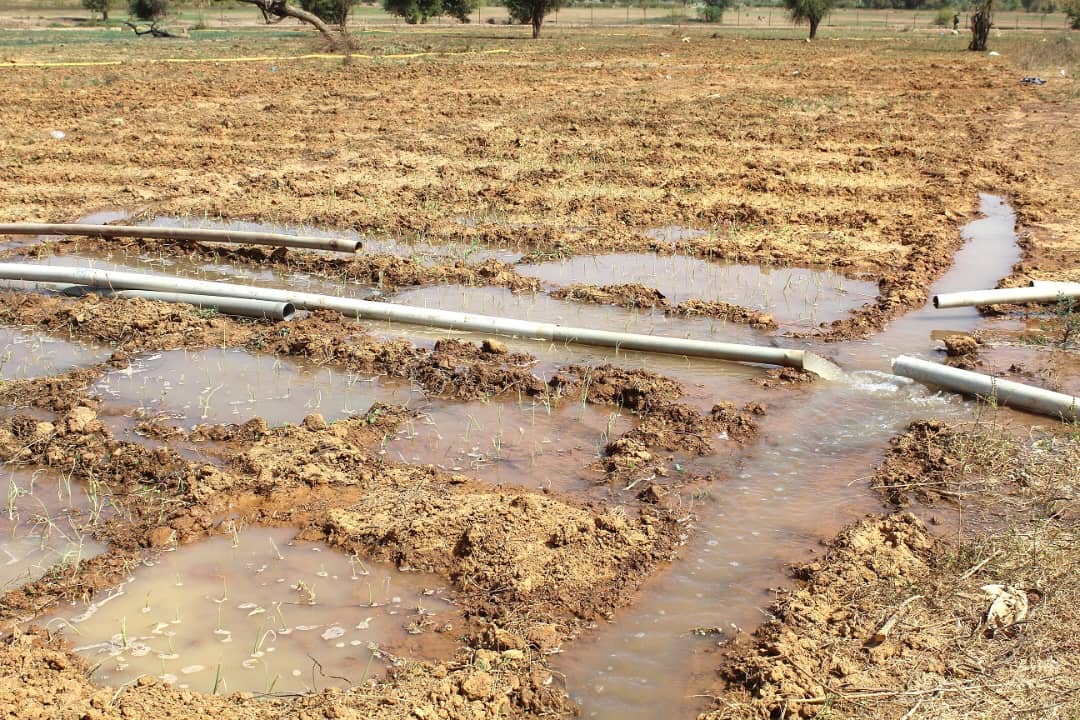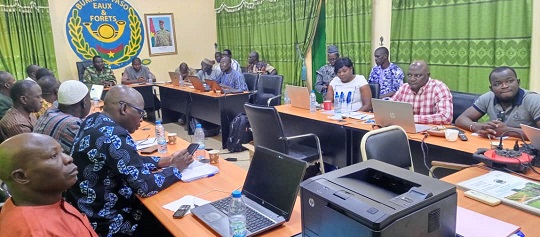- Home
- FIE
- Areas of intervention
- Funding
- News
- Opportunities
- Documents
- complaints and suggestions
- You are here:
-
Home

-
Funding

-
Modes of intervention

- Funding
Research
Follow us
Modes of intervention
It should be noted here that the FIE is not an executing structure. It does not implement direct environmental actions and does not manage projects or programs. In accordance with its missions, the Fund may play a role in the execution of major financing projects. Major current projects are:
- PADA / REDD-plus
The FIE is involved in the implementation of the Cashew Development Support Project in the Comoé Basin for Reducing Emissions from Deforestation and Forest Degradation (PADA / REDD +).
Approximately 6 446 170 000 F. CFA is the estimated cost of the project whose development objective is to contribute to the reduction of rural poverty and the increase of carbon sequestration capacity. The funding mechanism is based on three instruments. The Support Fund in the form of grants, which will be used to help small structures for plantations under agroforestry. The management of this fund is entrusted to the FIE, which will be in charge of examining the application files for support. The bodies set up within the FIE will be used for the reception, analysis and approval of applications submitted to the project. A credit line will be set up to finance investments and working capital by cashew farmers, processors and traders in the PADA / REDD + intervention zone covering the Cascades and Haut Bassins regions. and Southwest. The credit line mechanism will involve a technical evaluation structure at the FIE level. The launch of calls for projects for the selection of promoters took place in May 2018.
- PDIC / REDD +
The FIE collaborates with the Forest Investment Program (PIF) for the implementation of Integrated Municipal Development Programs (PDIC) in thirty-two (32) communes located in five (05) administrative regions [1] of the country according to the three axes: integration of Vocation Schemas of Spaces into Institutional Tools for Communal Development (i); securing rights of use in and around forests and woodlands (ii) and making municipal investments, proposed by the local actors themselves, having a positive impact on carbon storage or making it easier to implement concretely and respect for the vocation patterns of spaces (iii).
The CIDPs are planned to take place over 2 years and will be broken down into a set of diversified but coherent and integrated activities whose implementation will contribute effectively to REDD +.
As part of the implementation of the PDIC / REDD +, a mission is assigned to the Environmental Response Fund. This mission aims at enabling fiduciary facilitation through two roles: ensuring financial intermediation between the BIP and the 32 intervention communes; monitor compliance with administrative, accounting and financial and procurement procedures. To do this, the FIE has signed an agreement with the PIF. The cost of the intervention is estimated at about CFAF 4.8 billion.
- MANAGEMENT OF THE REHABILITATION FUNDS OF MINING SITES
According to the mining code, the FIE is the structure that will be responsible for managing the contributions made by mining companies for the rehabilitation of sites at the end of their operation. The FIE is working to acquire additional regulatory bases for the management of these funds and their transfer into its accounts.
- ACCREDITATION TO THE GREEN FUND FOR CLIMATE
The FIE is currently exchanging with the Global Institute for Green Growth, in English Global Green Growth Institute (GGGI). The international institution wishes to support the FIE towards access to innovative financing with a focus on FIE accreditation to the Green Climate Fund. In this perspective, the FIE has been designated by the Government as the national entity to be accredited.
The FIE combines different modes of operation. He intervenes mainly by calls for projects. Other mechanisms are possible:
- compensation of local communities
In the case of damage caused by wild animals in particular, the FIE is the structure responsible for examining the requests for compensation. The thematic committee "Forest and Wildlife" is responsible for examining these requests.
- The financing of emergency actions (environmental remediation)
In the event of a natural or industrial disaster, within the framework of the thematic fund "Reactions to natural and industrial disasters".
- A mechanism for investigating requests received on a case by case basis
It is a suitable mechanism for complex requests from large players, for example green investments in the productive sectors. This mechanism also makes it possible to respond to the limitations of the demand-driven approach because the FIE must be able to finance (i) certain large-scale actions that exceed the implementation capacities of local actors or that will not be requested by anyone, (ii) ) pilot projects that lead the way in new areas.
- The matching of existing funds or financial mechanisms
The FIE can delegate the management of part of its financing, with precise specifications. This is an opportunity to study for collaboration with the Permanent Fund for the Development of Territorial Communities (FPDCT) or the National Fund for Research and Innovation for Development (FONRID) for example.
- Financial incentives in the form of an interest rate subsidy or bank guarantee
- Competitions of best practices, aiming to give priority to the actors who have developed innovative or effective practices of sustainable development in their functioning, which encourages and also allows to communicate on these practices and facilitate their diffusion.
The choice and the exact combination of these different modes of intervention are decided according to the objectives set by the FIE, the domains and actors targeted, and the sources of funding.
FIE interventions are governed by guiding principles. They boil down to:
- coherence with international conventions;
- coherence with the priorities defined by policies and programs in the field of the environment and the fight against poverty;
- good governance;
- equity in access to finance, especially between men and women;
- capacity building of actors;
- taking into account vulnerable groups.
In Burkina, the environment is everyone's business, as stated in the Basic Law in its article 29, which makes the protection, defense and promotion of the environment a duty incumbent on all. And the different national policies and strategies in the Environment sector aim to benefit from the contribution of each stakeholder group at its level and in its field. In coherence with this, the FIE finances the environmental projects of all the actors intervening in the sector, in particular:
- local authorities (regions and urban or rural communes, alone or in inter-municipal terms),
- private operators and for-profit or economic groups,
- non-profit associations (associations, NGOs),
- technical services (public administrations),
- research institutions and public or private training centers.
The FIE finances each group of actors only in the fields of competence that are theirs according to the policies and regulations in force. The FIE supports the implementation of the institutional reforms expected in the Forest / Environment sector, such as decentralization or good governance in the management of natural resources. It does so through envelopes that target types of projects to support according to each group of actors.
The FIE uses mainly grants. This is because environmental actions often have no direct economic return in the short term for their beneficiaries and must be stimulated by subsidies. A minimum contribution is requested from the beneficiary.
The structures established in Burkina Faso and for environmental actions carried out in Burkina Faso are eligible for the FIE.
 English
English  Français
Français 


